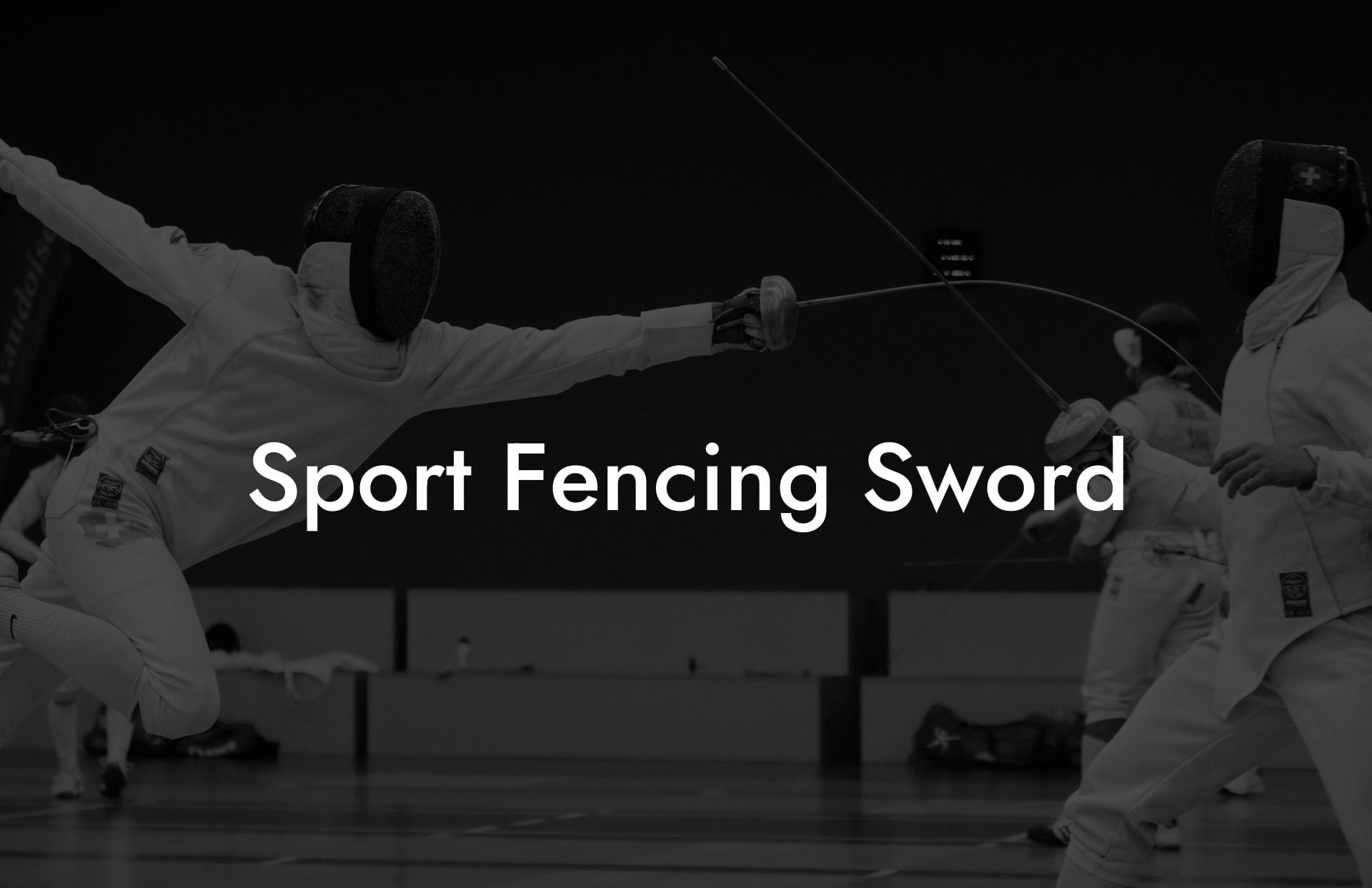Whether you're an aspiring fencer or a professional athlete, knowing more about the different types of sport fencing swords is essential. Learn about the characteristics of each sword and find out which one suits your unique fencing journey!
Sport Fencing Sword Table of Contents
A Brief Overview of Fencing Swords
Fencing is a thrilling, dynamic sport that combines speed, skill, and precision. There are three primary types of fencing swords used in modern sport fencing: the foil, épée, and sabre. Each weapon has unique traits, and the rules of engagement differ with each sword type. Let's delve into the exciting world of fencing swords and explore their distinct features!
Foil
The foil is the lightest and most flexible of the three swords. It weighs approximately 500 grams and has a rectangular-shaped blade with a slight curve. The target area in foil competitions is the torso, making it perfect for beginners who are still learning to control their actions and manage distance. Some key features of the foil are:
- Flexible and light blade, minimizing the risk of injury
- A protective button on the tip, called the "tip d'arrêt", which ensures that the force of a hit is minimal
- Right-of-way rules determining who gets a point in case of simultaneous hits
Épée
The épée is heavier and stiffer than the foil, weighing up to 770 grams. The blade is a triangular shape, making it less prone to bending during a match. This weapon offers more freedom to the fencer in terms of target area, as any part of the opponent's body is valid. Some distinctive features of the épée are:
- A stiffer blade, delivering more force in a hit
- A push-button on the tip to register hits
- No right-of-way rules, making it essential for fencers to showcase technical mastery and strategy
Sabre
The sabre is an aggressive weapon that adds an extra layer of excitement to sport fencing. It's a cutting and thrusting weapon that evolved from the cavalry sword, where the target area is the opponent's body above the waist - save for the hands. Weighing around 500 grams, just like the foil, the sabre features a unique curved guard designed to protect the hand. Notable characteristics of the sabre are:
- Blade can be used for both cutting and thrusting actions
- Distinct right-of-way rules, awarding the attacking fencer points for a successful hit
- Dynamic and fast-paced, making it popular among adrenaline-seeking fencers
Sport Fencing Sword Example:
Choosing the Right Sport Fencing Sword
Susan is an aspiring fencer who has recently fallen in love with the sport. As she explores the different types of swords, she considers her strengths, weaknesses, and personal preferences. Susan has always been quick on her feet and enjoys a fast-paced game, making the sabre an attractive option for her. On the other hand, Susan finds the right-of-way rules complicated and prefers a more straightforward style of play, so she is also interested in épée fencing.
After discussing her options with her coach and trying out both the sabre and épée during practice sessions, Susan decides that the épée is the right weapon for her. She enjoys the added challenge of strategizing and targeting her opponent's body while reducing the complexity of right-of-way rules. This choice allows Susan to focus on developing her unique épée fencing style, making her happy and engaged in the sport!
We hope this detailed guide on sport fencing swords has provided valuable insights into the distinctions between the foil, épée, and sabre. Choosing the right fencing weapon is crucial for both your success and enjoyment of this fantastic sport. Feel free to share this article with fellow fencers, and don't hesitate to explore more informative guides available on Anchorage Fencing Club!













